May 31, 2025 | 06:57 GMT +7
May 31, 2025 | 06:57 GMT +7
Hotline: 0913.378.918
May 31, 2025 | 06:57 GMT +7
Hotline: 0913.378.918
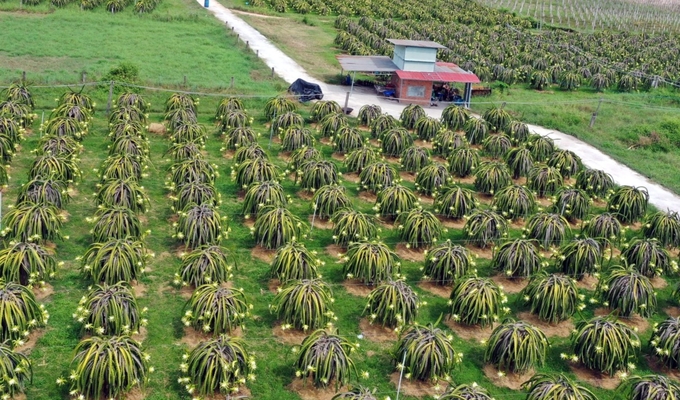
Binh Thuan dragon fruit enters the lantern season to harvest off-season fruit at the end of the year. Photo: KS.
Farmers in Binh Thuan began artificial light covering for dragon fruit growing on the 10th lunar month, to meet export market demand both before and after the impending Lunar New Year.
Mr. Nguyen Tanh, of Ham Liem commune, Ham Thuan Bac district, indicated that the price of dragon fruit has been consistent in recent months, ranging between 12,000 and 13,000 VND per kilogram (white flesh). While this price is not as high as it was previously, it assures a profit for farmers. As a result, most dragon fruit plantations are focusing their efforts on artificial light coverage, assuring production and fruit quality to fulfill both local and international market needs.
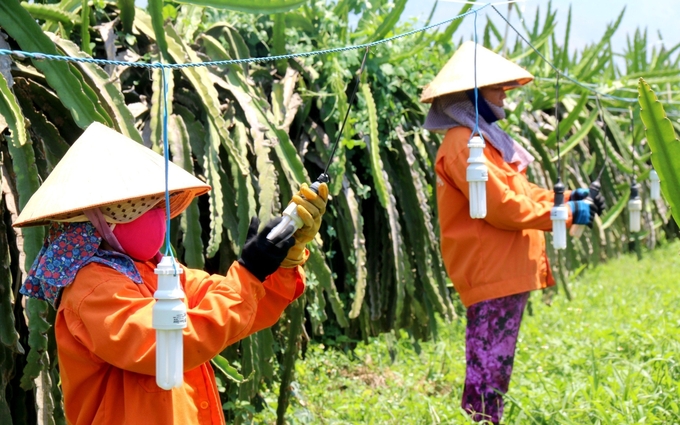
Farmers spread out the area for lighting to avoid gathering output at once and selling at a good price. Photo: KS.
According to Mr. Nguyen Tanh, producers are now using a phased method in applying artificial light coverage during different periods to avoid a concentrated harvest and ensure market outlets. For example, at Mr. Tanh's home, 350 pillars were covered with artificial light at the beginning of the 10th lunar month, equivalent to 1,100 dragon fruit pillars, for harvesting during the impending Tet festival. The remaining space is being meticulously cared for, with fertilizer and pest control measures in place in preparation for further artificial light covering in the following days. Some of these places are expected to produce dragon fruit in the early and late months of the next lunar year.
According to our findings, dragon fruit producers in Ham Hiep commune, Ham Thuan Bac district, are also assigning different regions for artificial light coverage to harvest fruit at different times in the latter months of the year, catering to the Lunar New Year market.
According to Mr. Nguyen Van Cuong, Deputy Chairman of the People's Committee of Ham Hiep commune, the commune as a whole contains around 1,800 hectares of dragon fruit. Farmers in the area are optimizing the use of sophisticated agricultural techniques to cut input costs in order to enhance blooming and assure an efficient harvest towards the end of the year, fulfilling export market needs. Prior to adopting artificial light covering, it is critical to apply balanced fertilizer and avoid pests.
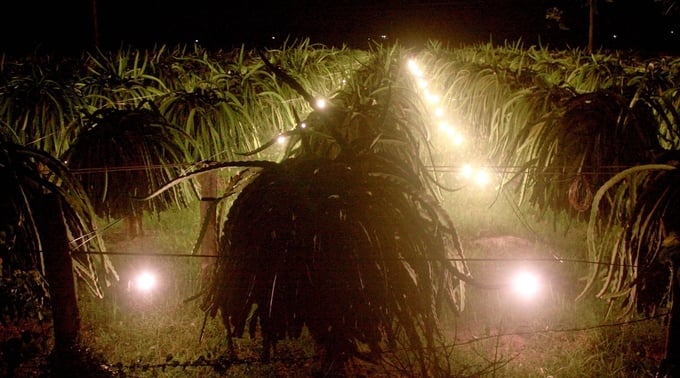
At night, the lights shine brightly in the dragon fruit garden. Photo: KS.
According to farmers, the off-season dragon fruit harvest normally begins in the 12th lunar month, with purchasing rates ranging from little more than 20,000 VND/kg to a minimum of 12,000 - 13,000 VND/kg. Only in years when disease outbreaks occur do dragon fruit prices fall. However, given the recent stability in purchasing prices, farmers remain hopeful about the harvest prospects in the last months of the year and the beginning of 2024."
According to Mr. Phan Van Tan, Deputy Director of Binh Thuan province's Department of Agriculture and Rural Development, the province now boasts approximately 27,000 hectares of dragon fruit production. To ensure both productivity and quality of dragon fruit for the export market in the final months of the year, the agricultural sector in Binh Thuan has directed farmers to concentrate on orchard care, balanced fertilization, efficiency, pest and disease prevention, and the use of organic fertilizers to reduce input costs. Farmers and companies are also encouraged to follow food safety rules.

Mr. Nguyen Van Thanh, village 2, Ham Duc commune (Ham Thuan Bac) is determined to produce GlobalGAP dragon fruits. Photo: KS.
The province agriculture sector has also asked specialized agencies to increase quality control, undertake plant protection product residue testing, predict and forecast dangerous organisms, and promote the adoption of appropriate agricultural practices. Special attention is paid to monitoring and forecasting importing nations' plant quarantine requirements in order to reduce export standards breaches, which have a direct influence on the province's dragon fruit exports and the country as a whole.
"In recent years, the agricultural sector has disseminated information and legal provisions to the community about food safety, cultivation techniques, and safe trading of dragon fruit products." We have also increased food safety inspection and testing efforts in the dragon fruit business. Furthermore, we have increased the dissemination of guidelines from the Ministry of Agriculture and Rural Development, the Plant Protection Department, and regulations on the establishment and monitoring of planting area codes, packaging facility codes, and other regulations to ensure compliance with the requirements of each importing market," said Binh Thuan's Deputy Director of Agriculture and Rural Development.
By November 2023, the province will have 602 dragon fruit growing area codes, including 82 for the United States, 119 for South Korea, 147 for Australia, 147 for New Zealand, 96 for China, and 11 for Japan. Furthermore, there are 251 packaging facility codes, including 227 for China, 10 for Australia, 10 for New Zealand, 1 for Japan, 1 for South Korea, and 2 for the United States. The province of Binh Thuan now boasts about 8,600 hectares of dragon fruit certified under VietGAP and 453 hectares under GlobalGAP.
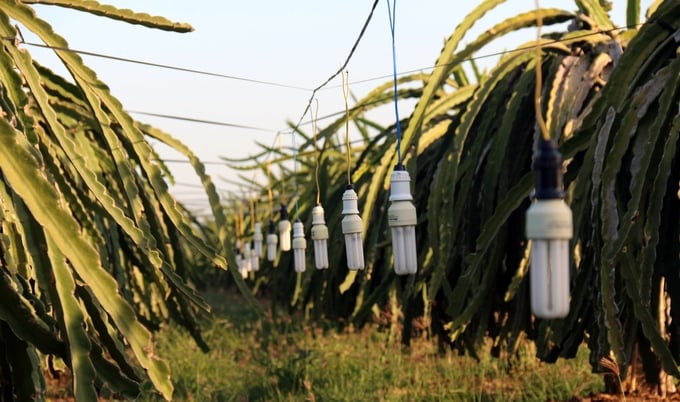
The lights will be turned off for about 2 months and 20 days. Photo: KS.
Mr. Do Thanh Hiep, Director of the Clean Dragon Fruit Cooperative in Hoa Le, Ma Lam town (Ham Thuan Bac), stated that the cooperative produces dragon fruit on 35 hectares in accordance with VietGAP requirements. They have also invested in workshops and new gear for the closed-loop processing of dragon fruit. As a result, through partnerships with companies in Ho Chi Minh City, the cooperative not only exports fresh dragon fruit to markets in South Korea, Australia, and India, but also develops various processed products from dragon fruit certified with the OCOP (One Commune One Product) designation to serve tourists both within and outside the province.
Translated by Linh Linh
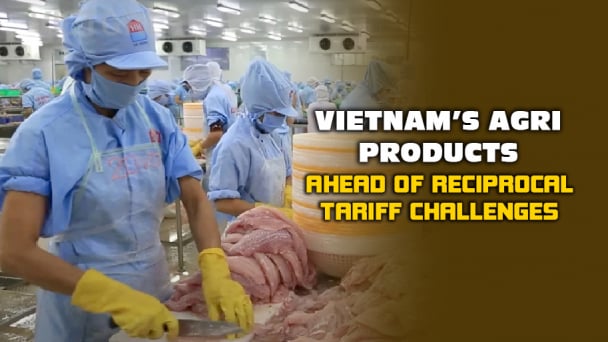
(VAN) Reciprocal tariffs are exerting pressure on U.S. exports, prompting Vietnamese firms to shift their focus to Muslim markets, Thailand, and Brazil.
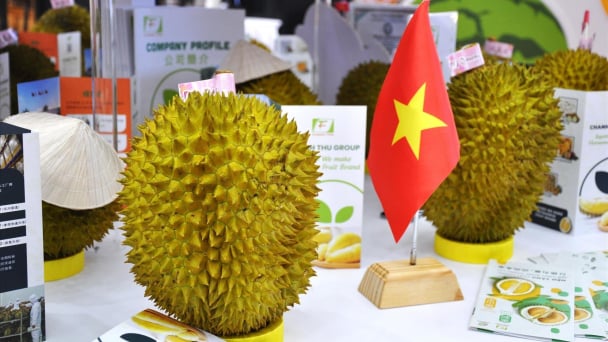
(VAN) A free booth for two years at Xinfadi, Beijing's largest wholesale market, will be allocated to Vietnam's agricultural products.
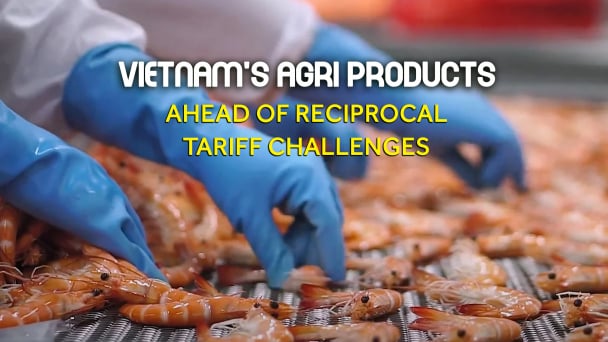
(VAN) Vietnamese shrimp exporters are actively looking for alternative markets and accelerating shipments to the United States in response to the pressure of impending reciprocal tariffs. This is occurring during a temporary tariff suspension.
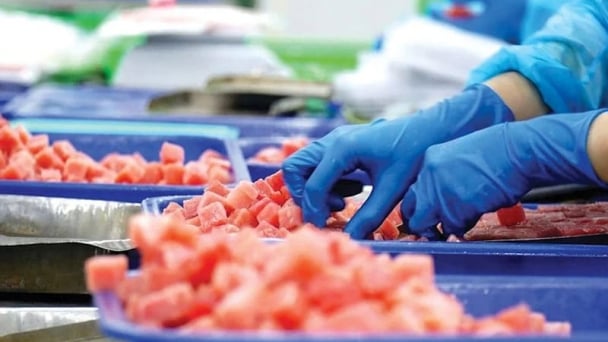
(VAN) The import-export turnover between Vietnam and Singapore rose amid a trade rebound, with machinery, electrical equipment, and fuels making up the majority of the transaction value.

(VAN) Director General of the General Administration of Customs of China, Ms. Sun Mai Jun, has pledged to implement measures that will ease the import process for Vietnamese agricultural products.
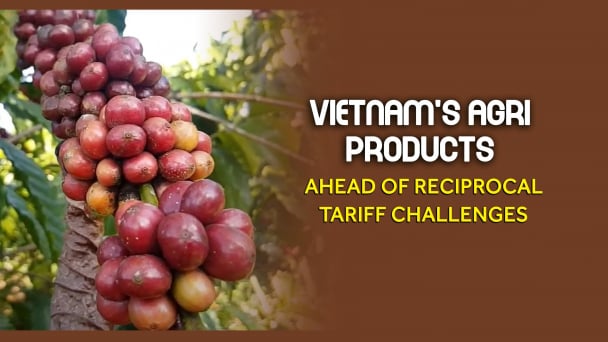
(VAN) Although Vietnam is still increasing its coffee exports, the industry is currently in the process of determining market strategies in response to the U.S. imposition of reciprocal tariffs.

(VAN) With rising demand in Muslim-majority countries, Halal certification is becoming a critical passport for Vietnamese agricultural products seeking sustainable market access and consumer trust in the Middle East and Africa.